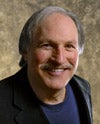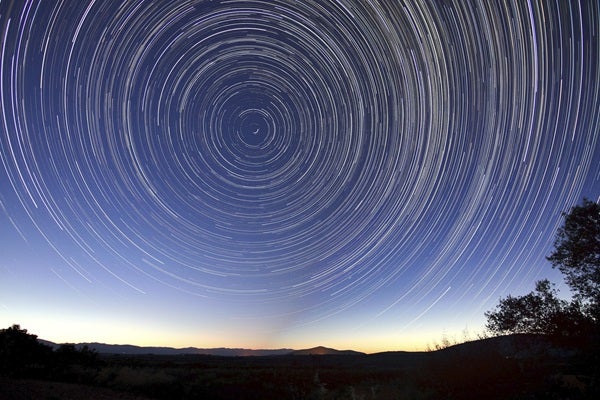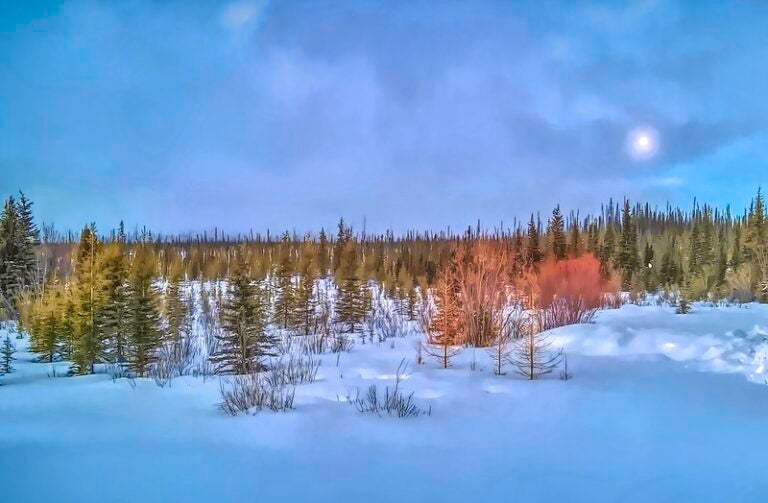Many things on Earth and in the heavens move in circles or ellipses. But the direction in which they spin is also important.
Spin is something we don’t always notice. For example, when you’re standing to the left of a car and it starts moving forward, which way do the wheels turn — clockwise or counterclockwise? Everyone should be able to figure this out in a few seconds, yet not everybody gets it right. And when it comes to the larger universe, the motion of celestial bodies often seems downright mysterious.
Let’s start with things on our planet. Which way do you turn a doorknob to enter a room? Which way does water spiral when you flush the toilet? OK, these are trick questions. In both cases, either way is the answer. That business about toilets flushing in opposite directions in Earth’s Northern and Southern hemispheres is totally bogus. The Coriolis effect influences only large-scale items like weather systems; it has no effect on toilets. Instead, the way water swirls down a basin or bowl is determined by the direction the water entered, the levelness of the basin, or any residual water motion when the plug is pulled.
Let’s move to real issues. In the Northern Hemisphere, which way does the wind circulate around a nice-weather, high-pressure system? If you said clockwise, you are correct. It’s counterclockwise for lows, meaning storms. That’s why we can trust the old mariners’ rule: When you face into the wind, your right arm points toward the storm.
What about the sky? When you face the North Star, all the stars and constellations slowly circle it during the night. Polaris is like the middle of a giant vinyl record. But which way does the record turn? Think for a moment. The answer is counterclockwise.
What if you were an astronaut or alien floating north of the solar system? Which way do all the planets revolve around the Sun? Again, the answer is counterclockwise. Since asteroids orbit that same way too, it’s obvious that a collision between an asteroid and Earth likely won’t be a terribly high-speed affair.
What about our galaxy’s rotation? Spiral galaxies typically rotate with their arms trailing the direction of spin. But that doesn’t help us because we can’t look at our galaxy from the outside.
How about this clue: When you’re under the summer sky and the Milky Way’s center is to your right in Sagittarius, you are facing the direction of the galaxy’s rotation. You’re now looking east where the star Deneb is rising these nights. Facing Deneb means looking in the exact direction the Sun and Earth are heading as our galaxy spins. If you can then picture where the North Star is situated, you can work out whether this is counterclockwise or clockwise. It may be easier to Google a 21-centimeter radio map of our galaxy’s hydrogen clouds, which trace the spiral arms, and remember we rotate opposite the trailing arms.
During winter days in the north, the Sun’s path is a giant rainbow-shaped arc across the southern sky. If we visualize this as the top segment of a circle, then daily Sun motion is indeed either clockwise or counterclockwise. Which is it? During our annual tours to the Southern Hemisphere, the strangest sky feature is that the Sun moves through the northern sky in the reverse direction from back home. In the United States, Canada, and Europe, the Sun moves clockwise along that arc, meaning rightward. Down there, it’s counterclockwise. It feels deeply weird.
Backward stuff always does. For example, during last August’s total solar eclipse, the Moon’s shadow swept across the United States from upper left to lower right, from Oregon to the Carolinas. And yet all observers saw the Moon cross the Sun’s face from upper right to lower left. How can you possibly explain this? Think about it.
Maps of the United States are always oriented with north up. But at the time of the eclipse, the Sun was in the southern sky. So we were all standing with our backs to the north. Thus, everything was reversed, and the backward motion is explained.
Sometimes you gotta keep your directions straight, or your mind goes in circles.











